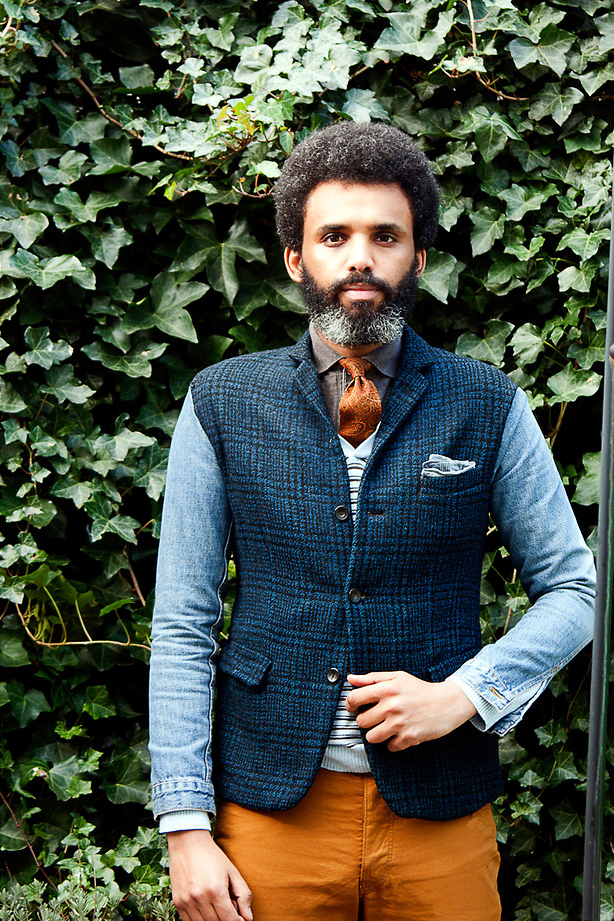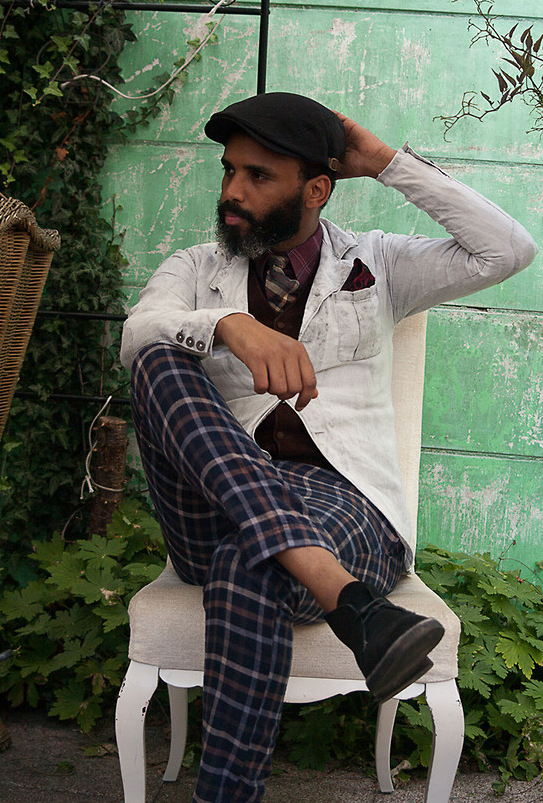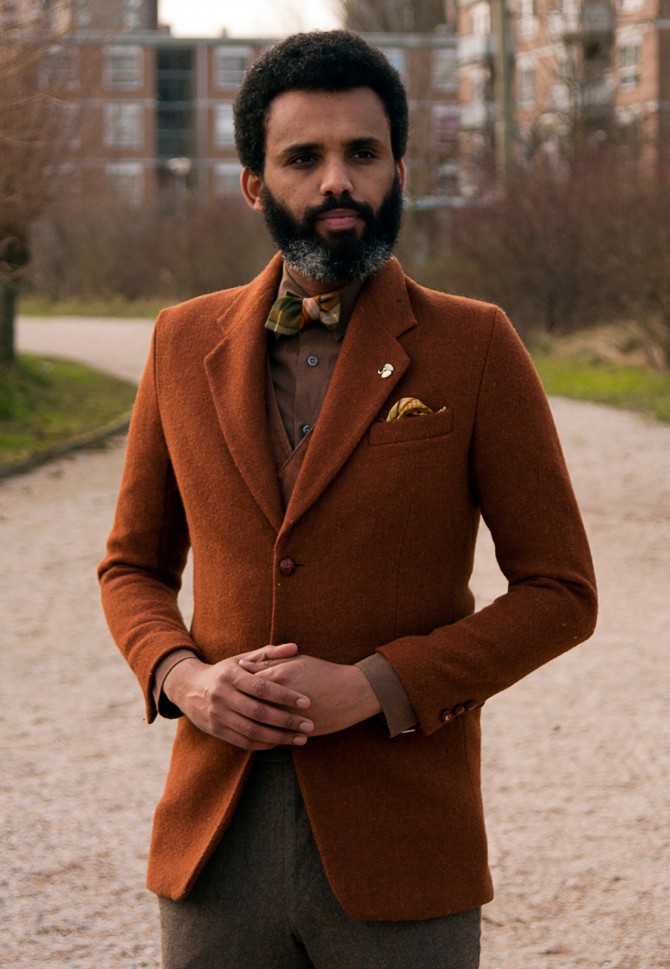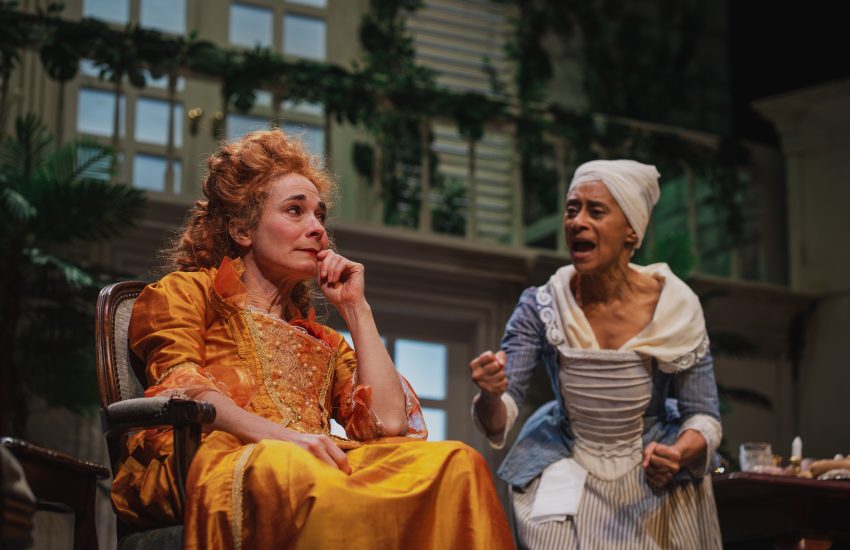Afropean Style: Thrifting with Dualleh Abdulrahman
Self-made fashionista Dualleh Abdulrahman is both Afropean in heritage and style. A designer, photographer and stylist, Dualleh talks to Tommy Evans about how he creates his signature look, how he remains dapper on a thrift shop budget and what it’s like to work for a mainstream brand when your own style is that much more laudable.
Afropean has been defined as “the social, cultural and aesthetic interplay of Black and European culture”. As a Dubai-born, German-raised, England-educated, Dutch-based gentleman of Somali and Iraqi heritage, would ‘Afropean’ be an apt description of your experiences, identity and ambience?
“Afropean” is a good description of what I am. It’s always been hard to explain my background to people. I lived in Germany before coming here [to Holland] and I was the first black guy they ever saw. To explain black culture to my classmates, the teacher showed the movie ‘The Gods Must Be Crazy’ [a 1980 South African comedy]– that was black culture to them! But that didn’t make me want to join the crowd or fit in.
You’ve previously mentioned how pivotal your father and uncle were in bouncy castle implanting and cultivating your passion for fashion…
My father, Allah bless his soul, was a stylish guy: he dressed funky fresh with a big afro. My uncle, who was half Italian/half Somali, dressed in the ‘dandy’ style. I just loved it. I used to hear my uncle tell his friends why the pocket square was invented. He said it was not only to finish the outfit but it had a function too: when you were leaving on a long trip, the wife would cry on your shoulder so… you rest the pocket square on your shoulder so that you don’t get make-up on your suit! That stuck with me until today. Everything in a man’s wardrobe has a function.

How influential were your institutional educational experiences in shaping your outlook? Can sartorial savviness be schooled? Or has the ‘University of Life’ taught you more about clothing and all that accompanies it?
School just teaches you the basics of fashion, which is good, but fashion is not style. I always say you can’t break the rules if you don’t know what the rules are. So I learned the history of fashion and style but the rest is just the ‘University of Life’. I love clothing but I will not pay thousands of Euros for something I can make myself – so thrifting was the next thing. Most times, I don’t even know what I will find. But I will keep my eye out for something I saw in a shop and then find similar items. Breaking the rules of men’s fashion is what sets you apart. Some like it, some don’t and you only learn that in real life. Sometimes I found things like braces that I had no clue about previously. So the thrift store helped broaden my closet with unique items.
What was the experience of working with a mainstream global brand such as H&M like?
Working in H&M was good but it had its downsides too. I worked in the men’s section – the classic section with suits – but I also gave style advice by appointment. For example, a customer would have a private session for three hours in which I would style and explain men’s fashion, but since I always wore my own stuff and not H&M’s, the customers tended to follow my cheap trend and I made no major sales! When they asked me where I got my clothes, I couldn’t keep it to myself. I love helping people out, just like the men or women who put free tutorials out there on the internet. I just couldn’t make customers buy off-the-rack, ill-fitted clothing. Buying cheap and making a ‘one of a kind’ piece was the next thing, so I quit my job and now I am thinking of starting my own clothing line.
As a photographer and stylist, do you adopt a different method to “making over” a client as you would to designing and constructing an outfit of your own?
Photography was not my thing but I couldn’t find a photographer who had experience in male photography. It was on TFPs [Time for Print meaning an arrangement whereby the photographer provides a set number of prints in exchange for the model’s time] and I never got what I wanted so jumpers for sale I picked up the camera myself. I majored in analogue photography so I had to learn digital myself; YouTube and Google are the best teachers! I had clients that I did the art directing and styling for, some of them paid, some on TFPs, I just can’t bring myself to ask for money every time. My wife hates this! I say to her, “First fame, then money!” I was just tired of putting in one hundred per cent and getting back zero, so I use all that Allah gave me to maybe, inshallah, reach my goal.

Your style effortlessly evokes the classic with a contemporary twist. How do you balance these two elements without becoming clichéd or pastiche?
In fashion you always had the rich man’s style and the poor man’s style, like the ‘20s working class and the ‘60s Mods – so I see myself as the ‘poor man’s style’! But since I shop in thrift and vintage stores I try to add new elements. For example, I have a 20th century tweed blazer that looks old fashioned so I added denim sleeves to make it contemporary; something old, something new. I also follow what’s in fashion and do the opposite but still keep trendy. Another example is that if there is a competition about men’s dapper style, every contender will come with a blazer; I will go with a dress shirt turned into a blazer – still keeping the blazer theme but with a twist!
As a corollary to the above: have you ever considered harvesting the cultural archive, juxtaposing visual elements of your African heritage with European classicism to create a more obviously Afropean aesthetic? I’m thinking macawis (the sarong – Somali style) here…
It’s funny you mentioned the macawis… my mother tells me she sees lots of boys wearing t-shirts really long like skirts so she says, “Why don’t they just wear macawis!?” African prints are now coming in trend. I also did some modeling work with designers from Angola’s Projecto Mental: crazy style suits with African prints and really fresh cuts. If I could find a great seamstress I would love to make shirts, blazers and pants out of Somalian prints and drawings.
 From one proud curator of a jaw orchard to another: how long have you rocked facial hair? I suspect your advocacy of “beard is beautiful” preceded the 2013 tipping point..?
From one proud curator of a jaw orchard to another: how long have you rocked facial hair? I suspect your advocacy of “beard is beautiful” preceded the 2013 tipping point..?
I started growing my beard 2010. I cut mechanical bull for sale it a year later ‘cause my wife hated it. But since 2012, I started growing it again – not cause it was fashion, I just felt like a change from my funky look before. I am going full on with handlebar and beard now!
A final question from Jamal Kalan [Co-founder of fashion boutique Inayah] who first put me on to your look: given limitless acres of funds, would you still pursue your unique search-find-tweak approach?
First of all, thank you to Jamal for noticing what I do and finding substance in it. If I had acres of funds, I would still do what I do. Maybe even more. It made me the sartorial man I am today.
More of Dualleh’s work can be seen here



I could not refrain from commenting. Well written!